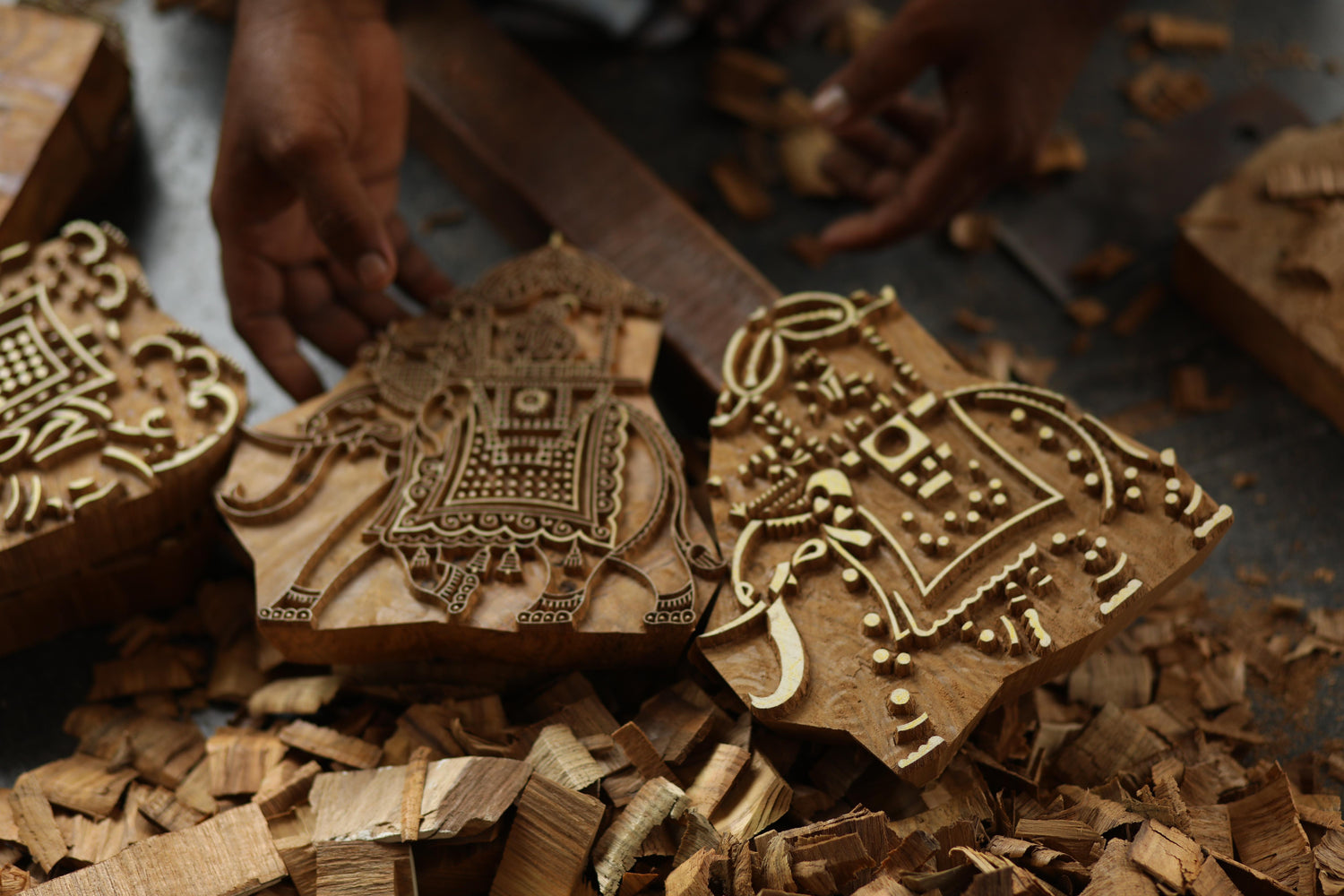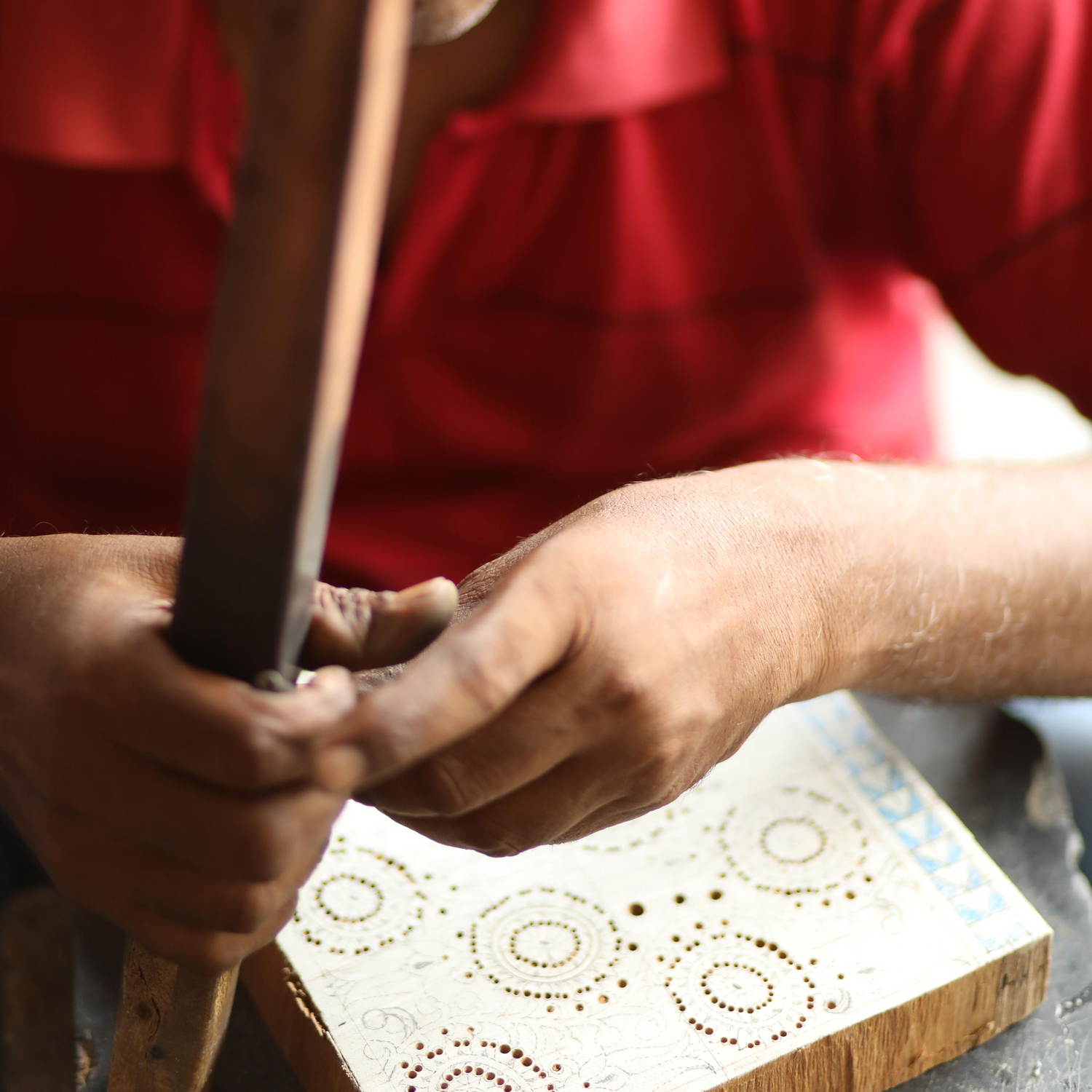
OUR STORY
SUTORI is more than a fashion brand. We represent a unique fusion of Indian tradition and contemporary aesthetics.Our name, inspired by the Sanskrit word “sutra” or “thread,” signifies our strong connection to textiles and craftsmanship.At the heart of SUTORI is the art of Kalamkari, a traditional Indian textile technique known for its intricate hand-painted or block-printed designs.SUTORI stands for sustainability. We carefully select organic fabrics and support ethical practices, ensuring that our fashion footprint respects both people and the planet

Crafting Heritage: The Art of Creating Wooden Blocks in Kalamkari
In the traditional art of Machilipatnam Kalamkari, the creation of wooden blocks is a craft in its own right.
Typically, teak wood is chosen for its durability and ability to hold intricate designs. The wood is initially cut into the desired size, then further shaped and smoothened using specialized tools. Artisans then meticulously chisel detailed patterns into the wood, often inspired by ancient Persian motifs, local flora, fauna or divine deities.
Once the carving process is complete, the block is soaked in oil for a couple of days to harden. This detailed and skillful process is handed down from generation to generation, preserving the rich history and tradition of handcrafted textile prints in Machilipatnam Kalamkari art.

Imprinting Heritage: The Art of Machilipatnam Kalamkari Block Printing
Machilipatnam Kalamkari block printing is an ancient art form that hails from Machilipatnam, a city in the Indian state of Andhra Pradesh. This unique technique utilizes hand-carved blocks made from teak wood, each inscribed with an exquisite pattern.
Artisans painstakingly dip these blocks in natural, eco-friendly dyes and press them onto the fabric, creating vibrant designs that echo Indian mythology and nature.The process requires immense precision and patience, as the cloth is repeatedly dipped and dyed, with the blocks carefully aligned to maintain pattern continuity.
Each finished piece is a testament to the artisan’s skill and creative vision, serving as a vivid storytelling medium that reflects India’s rich cultural heritage and textile tradition. Every inch of fabric, adorned with intricate motifs, resonates with the passion of the craftsperson and the legacy of Kalamkari art.
Unraveling The Intricate Steps: The Artistic Journey Of Kalamkari Creation
In the traditional art of Machilipatnam Kalamkari, the creation of wooden blocks is a craft in its own right. Typically, teak wood is chosen for its durability and ability to hold intricate designs. The wood is initially cut into the desired size, then further shaped and smoothened using specialized tools. Artisans then meticulously chisel detailed patterns into the wood, often inspired by ancient Persian motifs, local flora, fauna or divine deities. Once the carving process is complete, the block is soaked in oil for a couple of days to harden. This detailed and skillful process is handed down from generation to generation, preserving the rich history and tradition of handcrafted textile prints in Machilipatnam Kalamkari art.
